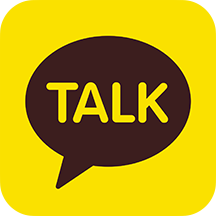Traveling to Vietnam for the first time can be an exciting adventure filled with stunning landscapes, rich culture, and delicious cuisine. However, navigating this vibrant country may feel a bit overwhelming for first-time visitors. From figuring out transportation to knowing what to pack, here’s a comprehensive guide with essential tips to make your trip smooth and enjoyable.
1. Get Your Visa in Order
Depending on your nationality, you may need a visa to enter Vietnam. Luckily, applying for an e-visa is a simple process and can be done online. Make sure to check the visa requirements for your country before you travel, and apply for your visa in advance to avoid last-minute hassles.
Option: You can also apply through reliable visa services like Trip Express, which offers hassle-free visa processing and ensures you get everything right before your trip.
2. When to Visit Vietnam
Vietnam is a long, narrow country with varying climates in different regions. The best time to visit depends on where you plan to go:
- North Vietnam (Hanoi, Halong Bay, Sapa): The ideal time is from October to April, with cooler, drier weather.
- Central Vietnam (Hoi An, Da Nang, Hue): The best time to visit is between February and May, avoiding the rainy season.
- South Vietnam (Ho Chi Minh City, Mekong Delta): December to April offers warm and dry weather.
3. Plan Your Itinerary Based on Interests
Vietnam has so much to offer, from bustling cities and ancient towns to stunning beaches and mountains. For first-timers, here’s a quick breakdown of what to expect in different regions:
- Northern Vietnam: Hanoi for culture, Halong Bay for natural beauty, and Sapa for trekking and ethnic culture.
- Central Vietnam: Hoi An for its charming ancient town, Da Nang for beaches, and Hue for history.
- Southern Vietnam: Ho Chi Minh City for energy and history, Mekong Delta for river cruises and floating markets.
4. Choosing the Right Transportation
Vietnam offers a range of transportation options, from flights and trains to buses and motorbikes:
- Domestic Flights: The fastest way to cover long distances between regions (e.g., Hanoi to Ho Chi Minh City).
- Trains: A scenic and comfortable option for mid-range travel. The Reunification Express is popular for trips between Hanoi and Ho Chi Minh City.
- Buses: Affordable and widely available, but long-distance buses can be tiring. Sleeper buses are an option for overnight travel.
- Motorbikes: Ideal for short distances or exploring rural areas, but be cautious if you’re unfamiliar with the local traffic rules.
5. Pack for the Weather and Culture
Vietnam’s climate can be diverse depending on the region, so pack accordingly:
- Lightweight clothing for warm weather, but remember to bring layers for cooler areas like Sapa or during the winter in the north.
- Modest attire is recommended, especially when visiting temples and religious sites.
- Good walking shoes are essential for cities, treks, and outdoor adventures.
6. Learn Basic Vietnamese Phrases
While English is widely spoken in tourist areas, learning a few basic Vietnamese phrases can enhance your experience and show respect for the local culture. Try these:
- Xin chào (Hello)
- Cảm ơn (Thank you)
- Bao nhiêu tiền? (How much is this?)
7. Try the Local Cuisine
Vietnamese food is world-famous, and each region has its specialties. From street food to sit-down restaurants, here are must-try dishes:
- Pho (Vietnamese noodle soup): A hearty bowl of broth, rice noodles, and herbs.
- Banh Mi (Vietnamese sandwich): A delicious baguette filled with meats, vegetables, and pate.
- Bun Cha: Grilled pork served with rice noodles and herbs (a specialty in Hanoi).
- Cao Lau: A unique noodle dish only found in Hoi An.
Don’t shy away from street food—it’s often where you’ll find the most authentic flavors!
8. Respect Local Customs and Etiquette
Vietnamese people are warm and hospitable, but like in any country, it’s important to respect their customs:
- Dress modestly: Especially when visiting temples or rural areas.
- Remove shoes: When entering someone’s home or a sacred place.
- Use both hands: When giving or receiving something as a sign of respect.
9. Prepare for Money Matters
Vietnam uses the Vietnamese Dong (VND), and while credit cards are accepted in larger hotels and restaurants, cash is still king in many places.
- ATMs are widely available in cities, but in smaller towns, it’s best to carry cash.
- Always carry small bills for street vendors, taxis, and tips.
- Bargain politely in markets, as haggling is common, but always with a smile!
10. Stay Connected
To make your trip more convenient, consider getting a local SIM card or pocket Wi-Fi:
- SIM cards with data are cheap and easy to find at the airport or convenience stores.
- Wi-Fi is readily available in most cafes, hotels, and restaurants across Vietnam.
Conclusion: Your Vietnam Adventure Awaits
Traveling Vietnam for the first time can be both exciting and a bit daunting. However, with these tips in hand, you’ll be able to explore the country’s incredible landscapes, rich culture, and delicious cuisine with confidence. Whether you’re trekking through Sapa’s mountains or cruising down the Mekong Delta, Vietnam promises an unforgettable adventure.
To make your journey even smoother, consider booking transportation and tour packages through Trip Express, where you can find curated experiences tailored to your travel needs.
Safe travels, and enjoy your first trip to Vietnam!



